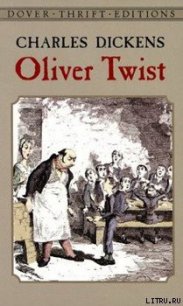Twenties Girl - Kinsella Sophie (читать полные книги онлайн бесплатно .TXT) 📗
“Indeed. But he never painted any other portraits. He refused to, his whole life. He was asked plenty of times in France as his reputation grew locally, but he would always reply, ‘J’ai peint celui que j’ai voulu peindre.’” The woman leaves a poetic pause. “I have painted the one I wanted to paint.”
I stare at her, dumbfounded, my head sparking as I take this all in. He only ever painted Sadie? His whole life? He’d painted the one he wanted to paint?
“And in this bead…” The woman moves toward the painting with a knowing smile. “Right in this bead here there’s a little surprise. A little secret, if you like.” She beckons me forward. “Can you see it?”
I try to focus obediently on the bead. It just looks like a bead.
“It’s almost impossible, except under a magnifying glass… here.” She produces a piece of matte paper. Printed on it is the bead from the painting, enlarged massively. As I peer at it, to my astonishment I find I’m looking at a face. A man’s face.
“Is that…” I look up.
“Malory.” She nods in delight. “His own reflection in the necklace. He put himself into the painting. The most miniature hidden portrait. It was discovered only ten years ago. Like a little secret message.”
“May I see?”
With shaking hands, I take the paper from her and stare at him. There he is. In the painting. In the necklace. Part of her. He never painted another portrait. He’d painted the one he wanted to paint.
He did love Sadie. He did. I know it.
I look up at the painting, tears blurring my eyes again. The woman’s right. He painted her with love. You can see it in every brushstroke.
“It’s… amazing.” I swallow. “Are there… um… any more books about him?” I’m desperate to get this woman out of the room. I wait until her footsteps have disappeared down the passage, then tilt my head up.
“Sadie!” I call desperately. “Sadie, can you hear me? I’ve found the painting! It’s beautiful. You’re beautiful. You’re in a museum! And you know what? Stephen didn’t paint anyone but you. Never, his whole life. You were the only one. He put himself in your necklace. He loved you. Sadie, I know he loved you. I so wish you could see this-”
I break off breathlessly, but the room is silent and dead. She’s not hearing me, wherever she is. As I hear footsteps, I quickly turn and plaster on a smile. The woman hands me a pile of books.
“This is all our available stock. Are you an art-history student or simply interested in Malory?”
“I’m just interested in this one painting,” I say frankly. “And I was wondering. Do you… or the experts… have any idea who this is? What’s the painting called?”
“It’s called Girl with a Necklace. And, of course, many people are interested in the identity of the sitter.” The woman launches into what’s clearly a well-rehearsed speech. “Some research has been done, but unfortunately, to date, no one has been able to identify her beyond what is believed to be her first name.” She pauses, then adds fondly, “Mabel.”
“Mabel?” I stare at her in horror. “She wasn’t called Mabel!”
“Dear!” The woman gives me a reproving smile. “I know to modern ears it may seem a little quaint, but, believe me, Mabel was a common name of the time. And on the back of the painting there’s an inscription. Malory himself wrote, My Mabel.”
For God’s sake.
“It was a nickname! It was their private joke! Her name was Sadie, OK? Sadie Lancaster. I’ll write it down. And I know it was her because…” I hesitate momentously. “This is my great-aunt.”
I’m expecting a gasp or something, but the woman just gives me a dubious look.
“Goodness, dear. That’s quite a claim. What makes you think she’s your great-aunt?”
“I don’t think she is, I know she is. She lived here in Archbury. She knew Steph-I mean Cecil Malory. They were lovers. It’s definitely her.”
“Do you have any evidence? Do you have a photograph of her in her youth? Any archives?”
“Well… no,” I say, a little frustrated. “But I know it’s her, beyond a doubt. And I’ll prove it somehow. And you should put a sign up saying her name and stop calling her Mabel-” I pause mid-track as something new and startling occurs to me. “Hang on a minute. This is Sadie’s painting! He gave it to her! She lost it for years, but it’s still hers. Or, I suppose, Dad’s and Uncle Bill’s now. How did you get it? What’s it doing here?”
“I’m sorry?” The woman sounds bewildered, and I give an impatient sigh.
“This painting belonged to my great-aunt. But it was lost, years and years ago. The family house burned down and she thought the painting was destroyed. So how did it end up hanging on this wall?” I can’t help sounding accusing, and she recoils.
“I’m afraid I have no idea. I’ve worked here for ten years and it’s certainly been here all that time.”
“Right.” I assume a businesslike air. “Well, can I please talk to the director of this museum or whoever’s in charge of this painting? At once?”
The woman gives me a wary, puzzled look. “Dear… you do realize this is only a reproduction, don’t you?”
“What?” I feel wrong-footed. “What do you mean?”
“The original is four times the size and, dare I say it, even more splendid.”
“But…” I look at the painting in confusion. It looks pretty real to me. “So, where’s the original? Locked up in a safe or something?”
“No, dear,” she says patiently. “It’s hanging in the London Portrait Gallery.”
TWENTY-FOUR
It’s massive. It’s radiant. It’s a million times better than the one in the house.
I’ve been sitting in front of Sadie’s portrait in the London Portrait Gallery for about two hours. I can’t drag myself away. She’s gazing out at the gallery, her brow clear, her eyes a velvety dark green, like the most beautiful goddess you’ve ever seen. Cecil Malory’s use of light on her skin is unmatched in its artistry. I know, because I heard an art teacher telling her class half an hour ago. Then they all went up to see if they could spot the little miniature portrait in the necklace.
I must have seen a hundred people coming and looking at her. Sighing with pleasure. Smiling at one another. Or just sitting down and gazing.
“Isn’t she lovely?” A dark-haired woman in a mac smiles at me and sits down beside me on the bench. “This is my favorite portrait in the whole gallery.”
“Me too.” I nod.
“I wonder what she’s thinking?” the woman muses.
“I think she’s in love.” I look yet again at Sadie’s glowing eyes, the flush in her cheek. “And I think she’s really, really happy.”
“You’re probably right.”
For a moment we’re both quiet, just drinking her in.
“She does you good, doesn’t she?” says the woman. “I often come and look at her in my lunchtimes. Just to cheer myself up. I’ve got a poster of her at home too. My daughter bought it for me. But you can’t beat the real thing, can you?”
There’s a sudden lump in my throat, but I manage to smile back. “No. You can’t beat the real thing.”
As I’m speaking, a Japanese family approaches the painting. I can see the mother pointing out the necklace to her daughter. They both sigh happily, then adopt identical poses, arms folded, heads tilted, and just gaze at her.
Sadie’s adored by all these people. Tens, hundreds, thousands. And she has no idea.
I’ve called for her until I’m hoarse, over and over, out the window, up and down the street. But she doesn’t hear. Or she doesn’t want to hear. Abruptly, I stand up and consult my watch; I have to go, anyway. It’s five o’clock. Time for my appointment with Malcolm Gledhill, the collections manager.
I make my way back to the foyer, give my name to the receptionist, and wait among a swarming crowd of French schoolchildren until a voice from behind says, “Miss Lington?” I turn to see a man in a purple shirt, with a chestnut beard and tufts of hair growing out of his ears, beaming at me with twinkly eyes. He looks like Father Christmas before he grew old, and I can’t help warming to him instantly.




